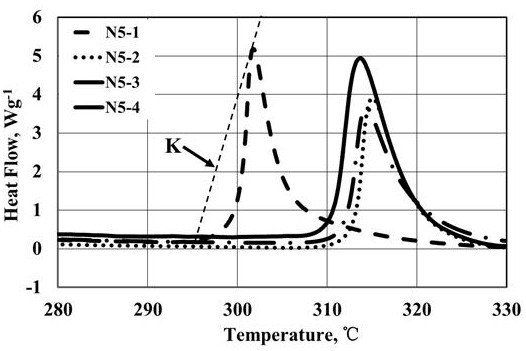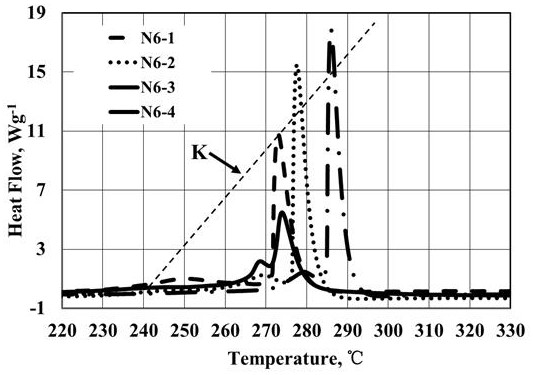A fast evaluation method for thermal storage stability of cathode materials for lithium ion batteries
A thermal storage stability, lithium-ion battery technology, applied in the direction of thermal expansion coefficient of materials
- Summary
- Abstract
- Description
- Claims
- Application Information
AI Technical Summary
Problems solved by technology
Method used
Image
Examples
Embodiment 1
[0039] Four kinds of nickel-cobalt lithium manganese oxide NCM523 ternary cathode materials prepared by a similar process were selected, and the positive electrode sheets were made respectively according to the active material content of 95wt.%. And use the same electrolyte, separator and half-cell accessories to assemble four batches of button half-cells.
[0040]The above four batches of button half batteries were activated by constant current and constant voltage charge and discharge cycle in the range of 3.0~4.35V respectively. The charge and discharge system is as follows: 0.1C charge and discharge for 2 weeks, 0.2C charge and discharge for 1 week, 0.5C charge and discharge for 1 week, 1.0C charge and discharge for 1 week and 2.0C charge and discharge for 1 week, a total of 6 weeks. After the cycle activation is completed, it is charged to 4.35V at a constant current and constant voltage at a rate of 0.1C, and the cut-off current of constant voltage charging is 0.01C.
...
Embodiment 2
[0053] Four kinds of nickel-cobalt lithium manganese oxide NCM622 ternary cathode materials prepared by a similar process were selected, and the positive electrode sheets were respectively made according to the active material content of 92wt.%. And use the same electrolyte, separator and half-cell accessories to assemble four batches of button half-cells.
[0054] The above four batches of button half-cells were activated by constant current and constant voltage charge and discharge cycle in the range of 3.0~4.30V respectively. The charge and discharge system is as follows: 0.1C charge and discharge for 2 weeks, 0.2C charge and discharge for 1 week, 0.5C charge and discharge for 1 week, 1.0C charge and discharge for 2 weeks, 2.0C charge and discharge for 1 week, 5.0C charge and discharge for 1 week and 1.0C charge and discharge 1 week of discharge for a total of 9 weeks. After the cycle activation is completed, it is charged to 4.30V at a constant current and constant voltag...
Embodiment 3
[0066] Four kinds of nickel-cobalt lithium manganese oxide NCM811 ternary cathode materials prepared by a similar process were selected, and the positive electrode sheets were made respectively according to the active material content of 90wt.%. And use the same electrolyte, separator and half-cell accessories to assemble four batches of button half-cells.
[0067] The above four batches of button half batteries were activated by constant current and constant voltage charge and discharge cycle in the range of 3.0~4.25V respectively. The charge and discharge system is as follows: 0.1C charge and discharge for 2 weeks, 0.2C charge and discharge for 2 weeks, 0.5C charge and discharge for 2 weeks, 1.0C charge and discharge for 2 weeks, 2.0C charge and discharge for 2 weeks, 5.0C charge and discharge for 1 week and 1.0C charge and discharge 1 week of discharge for a total of 12 weeks. After the cycle activation is completed, it is charged to 4.25V at a constant current and constan...
PUM
 Login to View More
Login to View More Abstract
Description
Claims
Application Information
 Login to View More
Login to View More - R&D
- Intellectual Property
- Life Sciences
- Materials
- Tech Scout
- Unparalleled Data Quality
- Higher Quality Content
- 60% Fewer Hallucinations
Browse by: Latest US Patents, China's latest patents, Technical Efficacy Thesaurus, Application Domain, Technology Topic, Popular Technical Reports.
© 2025 PatSnap. All rights reserved.Legal|Privacy policy|Modern Slavery Act Transparency Statement|Sitemap|About US| Contact US: help@patsnap.com



